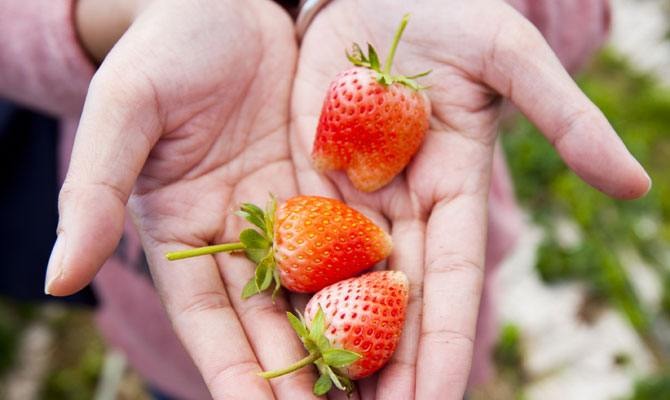How To Turn Your Yard Into A Grocery Store This Summer
Nothing makes award-winning recipes pop like fresh produce. Sure, you could head to the store and pick up some fruit and vegetables, but a dish won't be all it can be without the perfect ingredients. So instead of relying on grocery produce of unknown origins for your favorite summer meals, pick it from your backyard instead.
How to Turn Your Yard Into a Grocery Store This Summer
"It's not very difficult to put a seed in the ground and let it grow," says Colin Cudmore, founder of the Garden Tower Project. "Nature does it every day!" The garden tower, which Cudmore invented, allows anyone to grow organic vegetables easily even in locations like flat rooftops, concrete slabs, and decks.
With that in mind, even if you've never pulled a weed out of the ground, you can begin growing the perfect summer produce. And where else would you begin but with the seeds?
"Of the thousands of seeds a plant releases, only a few may actually germinate and grow," explains Cudmore. "Cover yourself by not planting every seed in the packet. If any seeds don't sprout, you'll have extras for replacement."
Speaking of seeds, did you know that they have their own terminology? Cudmore broke down some common seed lingo to help you choose the best crops for your garden:
- "Average last-frost date: The last-frost date is the estimated date of the last hard frost of the season in your area. Every seed packet tells you how many weeks before or after that date to plant the seed.
- Broadcast: To scatter seed over an area as opposed to planting in a row.
- Inoculant: Living bacteria that helps peas, beans, and other legumes take nitrogen from the atmosphere and fix it in the soil. Pea and bean seeds grow best when they're inoculated before you sow the seeds. Inoculant is sold in a powdered form and needs to be fresh to work. Buy a new packet every year and follow the instructions to properly execute the process.
- Scarify: To create openings in the hard coats of certain seeds to admit moisture and initiate germination. Large seeds are usually nicked with a file or knife; small seeds may be rubbed gently inside a folded sheet of sandpaper.
- Soak: To soften the outer coats of hard seeds by immersing them overnight in warm water. Sow them immediately after soaking or they will wither and die."
Now that you are thoroughly educated on the inner workings of seedlings, it's time to get growing! Follow these incredible tips for tasty crops all summer long, but take care to remember: these tips are following the Northeast seasonal calendar.
Begin with the Basics

"Decide in advance how many of each vegetable or flower variety you want and where you're going to site it. Label your plant markers with the variety name and date before you head outdoors. If your shoes get muddy when walking around the garden, then your soil is too wet for sowing or transplanting. Wait for a drier day. If it's been more than a couple of weeks since you've turned the soil and prepared your beds, then they've probably crusted over from rain. Drag a rake over the area a couple of times to break up the crust (you'll likely need to weed, too)."
— Colin Cudmore
Bush Beans

"Beans are best when directly sown from seed in the garden when soil temperature is a least 60 degrees F. Plant in full sun. Soak the seeds in water for about one hour prior to planting to speed germination and coat the seeds with an organic bean or pea inoculant to boost harvest. During peak production, harvest beans frequently to keep them producing."
— Brande R. Plotnick, founder of the sustainable living site Tomato Envy
